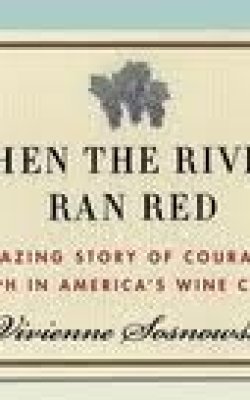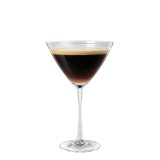When The Rivers Ran Red examines the impact of Prohibition on California’s wine country, particularly the famed Sonoma County. Vivienne Sosnowski spent many hours researching this little discussed topic, including hours of oral interviews with the few survivors of Prohibition, who were in their 90’s by the time Ms. Sosnowsky interviewed them. I have to admit that this book made me see red when reading it. Living in San Francisco, we are in close proximity to the wine country, and I particularly love Sonoma Valley. I could only imagine the impact that Prohibition had on so many hard working Americans in the wine industry.
In her examination of Prohibition’s effect on Sonoma Valley, Ms. Sosnowski also reviews the history of Sonoma. That history was fascinating. I am embarrassed to admit that I really didn’t know much about Sonoma. I knew that many hard working and enterprising immigrants laid the foundations of both Sonoma and Napa Valleys. From the names of the older wineries, I knew that the Italians and Germans had been integral to their foundation. However, what I didn’t know was the back breaking labor it took to clear the forests, including a fair number of red wood forests, that laid in those valleys. You wouldn’t guess it today that the land that is now blanketed in vine was once covered in forest. I didn’t know that by the time of Prohibition, there were growers who had owned their ranches for over 50 years, vines that were in excess of 30 years old and aging vintages in the winemaker’s cellars. And, I didn’t realize how long it took to go from San Francisco to the wine country!
Like most of the country, the wine country largely slumbered while Prohibition forces were at work in the early part of the 20th Century. Like most, the growers and winemakers in Sonoma and Napa couldn’t believe that the United States would implement Prohibition. This is easy to see. Looking back 100 years, it’s still difficult to conceive that the United States would engage in such a failed experiment that infringed on the civil liberties of every single person in the country. The winemakers were convinced that even if Prohibition were enacted, it wouldn’t affect the wine and beer interests. They were wrong. Ms. Sosnowski discusses the feelings of the winemakers as Prohibition was swirling but doesn’t delve into a deep examination of the forces behind Prohibition. For more on that, check out the excellent Last Call.
Ms. Sosnowski does an excellent job of bringing Prohibition alive in the lives of the growers and winemakers in the Sonoma and Napa Valleys. For some, Prohibition was ruinous. People saw the value of their land plummet, their major asset (stored wine) literally turn to vinegar and were forced out after years of trying to hang on to their way of lives and savings, which was tied up in the land and stock of wine. For some, they barely survived Prohibition, living off the abundant land to supplement their scarce earnings. For others, Prohibition left permanent scars, including the dumping of 140,000 gallons of wine held by the Foppianos for which they had paid tax and bond and was done on nothing more than the whim of Prohibition officers. For others, Prohibition brought great wealth. Much bootlegging went on in both valleys and the rough Sonoma coast was used to bring in illegal booze from Mexico and Canada. Yet, there was much risk in such ventures.
To get a feel for what it was like to live in wine country during Prohibition, read When The Rivers Ran Red. To fully understand the impact on the wine industry and the decades it took for it to recover, read George Taber’s fascinating The Judgement of Paris.











